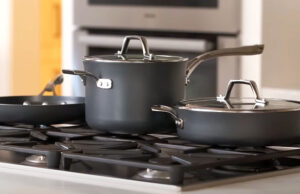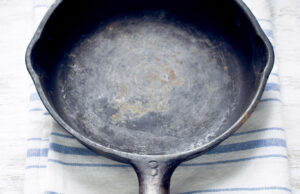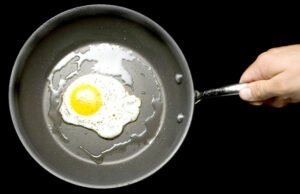As an Amazon Associate, I earn from qualifying purchases at no extra cost to you.
How to Hook Up a Dishwasher Like a Pro: Expert Guide and Tips
Are you tired of washing dishes by hand? Want to learn how to hook up your own dishwasher and save yourself time and effort? In this article, I’ll walk you through every step of the process. Whether you’re a beginner or have some experience with home improvement, this easy-to-follow tutorial will help you get your dishwasher up and running in no time. Let’s get started!
Preparing for the Dishwasher Hookup: Tools and Supplies You Need
Before you start hooking up your dishwasher, it’s important to gather all the tools and supplies you’ll need. Having everything ready will make the process much easier and save you time.
Tools and Supplies Checklist
Here is a simple list of the things you’ll need:
- Dishwasher: Obviously, you need the dishwasher itself. Ensure that it’s the right size and fits your space before beginning.
- Water supply line: This is the hose that connects the dishwasher to the water supply.
- Drain hose: This hose removes wastewater from the dishwasher and sends it to the drain.
- Power supply: Dishwashers need to be connected to a power source. You will usually either plug it in or hardwire it.
- Plumbing fittings: These include adapters, clamps, and connectors that will help you attach the water line and drain hose properly.
- Screwdriver: A good old screwdriver will help you attach various parts of the dishwasher.
- Teflon tape: You’ll use this to ensure the plumbing connections are sealed tightly.
- Adjustable wrench: This helps tighten nuts and bolts on the water supply and drain line.
- Level: To make sure your dishwasher is perfectly balanced and will operate smoothly.
Once you have everything on hand, you’re ready to get started. But before jumping into the installation, it’s essential to do a little prep work.
Check the Installation Space
Before you get into the details of hooking up your dishwasher, make sure the space where you plan to install it is ready. It should be clear of any obstacles, and the area should have easy access to the water supply, drain, and electrical outlet.
Turn Off the Power and Water Supply
Before doing any work, make sure to turn off both the water supply and the power to the area where you’ll be installing the dishwasher. This will prevent any accidents and make sure you’re working safely.
Step-by-Step Guide: How to Hook Up Your Dishwasher
Now, it’s time to get into the detailed steps of hooking up your dishwasher. Don’t worry – I’ll walk you through the entire process.
Step 1: Connecting the Water Supply Line
First, you need to connect the water supply line to the dishwasher. The water supply is typically located under the sink or in the cabinet beside the dishwasher. Here’s how you can do it:
- Start by attaching one end of the water supply line to the dishwasher. You’ll need to use a fitting that matches the dishwasher’s water inlet valve. Most dishwashers have a threaded inlet where the hose connects.
- Use Teflon tape on the threads to ensure a tight, leak-free seal.
- Tighten the connection by hand first and then finish tightening it with a wrench. Don’t overtighten, as that could damage the threads.
Step 2: Attaching the Drain Hose
The next step is connecting the drain hose. The drain hose is essential because it removes dirty water from the dishwasher. Here’s how to attach it:
- One end of the drain hose connects to the dishwasher’s drain outlet.
- The other end connects to the drain under the sink or the garbage disposal. If your dishwasher is near the garbage disposal, the hose will connect there.
- Secure the hose with a clamp to prevent it from coming loose.
Step 3: Connecting the Power Supply
Now it’s time to hook up the dishwasher to the electrical supply. There are two main ways this is done:
- Plug-in connection: If your dishwasher has a plug, just plug it into the nearest electrical outlet. Make sure the outlet is grounded for safety.
- Hard-wired connection: If your dishwasher doesn’t have a plug, you’ll need to connect it directly to the electrical wiring in the wall. This is usually done using a junction box or a specific connection kit. If you’re not sure how to do this, it’s best to consult a licensed electrician.
Step 4: Installing the Dishwasher into Place
Once all the connections are made, it’s time to slide the dishwasher into place. Here’s what you need to do:
- Carefully tilt the dishwasher so that the water and drain hoses don’t get kinked or bent.
- Slide the dishwasher into the space under the counter, making sure it’s level. Use the level to ensure that the dishwasher is sitting flat.
- Secure the dishwasher to the cabinet with screws to keep it in place.
Step 5: Testing for Leaks and Functionality
Before you finish the job, it’s important to test your work to make sure everything is working correctly:
- Turn the water supply back on and check for any leaks around the water line or drain hose. Tighten any connections that may be leaking.
- Turn on the power and run a short wash cycle to ensure everything is functioning properly.
If everything is working as it should, congratulations – your dishwasher is successfully hooked up!
Common Troubleshooting Tips for Dishwasher Hookups
Sometimes things don’t go perfectly, and that’s okay! If you face any issues during your dishwasher hookup, here are some troubleshooting tips to help you fix common problems.
Problem 1: Leaking Water Connection
If you notice water leaking around the water supply line or drain hose, the most common cause is loose connections. Here’s what you can do:
- Check all connections to ensure they are tight. Make sure the hoses are securely clamped.
- If necessary, reapply Teflon tape around the threads of the connections to create a better seal.
Problem 2: Dishwasher Not Getting Power
If your dishwasher isn’t turning on, there are a few possible causes:
- Check the power connection to make sure the dishwasher is plugged in or the wiring is properly connected.
- Verify that the circuit breaker hasn’t been tripped. If it has, reset the breaker.
- If you’re hardwiring the dishwasher, make sure the junction box is connected correctly.
Problem 3: Dishwasher Not Draining Properly
If your dishwasher isn’t draining properly, check these things:
- Ensure the drain hose isn’t kinked or clogged. If the hose is blocked, water can’t flow out properly.
- Inspect the drain filter for any food or debris that may be causing a clog.
- Make sure the drain connection under the sink is clear of obstructions.
If you follow these tips and solutions, you should be able to fix any common issues with your dishwasher hookup. But if the problem persists, it might be time to call a professional plumber or electrician to help.
I hope this article helped you understand how to hook up a dishwasher. With the right tools and a bit of patience, you can easily install a dishwasher and enjoy the convenience it brings. If you follow each step carefully and test your work, you’ll have your dishwasher up and running in no time.
Frequently Asked Questions
Is it hard to hook up a dishwasher by yourself?
No, hooking up a dishwasher is not too difficult if you have the right tools and follow the steps carefully. With some basic knowledge of plumbing and electrical work, you can handle it on your own.
Can I install a dishwasher without a plumber?
Yes, you can install a dishwasher yourself without needing a plumber. As long as you’re comfortable with basic plumbing tasks like connecting hoses and tightening fittings, you should be able to do it.
Do I need special tools to hook up a dishwasher?
You’ll need some basic tools, such as a wrench, screwdriver, adjustable pliers, and Teflon tape. These tools are usually available in most home toolkits.
Is it necessary to hire an electrician to hook up a dishwasher?
If you are unsure about wiring the dishwasher, it’s a good idea to hire an electrician. However, if your dishwasher has a plug, you can simply plug it into an outlet yourself.
Can I hook up a dishwasher to an existing water line?
Yes, you can hook up a dishwasher to an existing water line, as long as it has the right fittings. If your sink has a water supply line nearby, it’s usually easy to connect your dishwasher.
Do I need to turn off the water supply before installing the dishwasher?
Yes, it’s important to turn off the water supply to avoid leaks or accidents while installing the dishwasher.
Is it safe to install a dishwasher myself?
If you follow the instructions carefully and take the necessary safety precautions, installing a dishwasher yourself is safe. However, if you’re unsure about any steps, it’s always better to call a professional.
Can I install a dishwasher under any countertop?
Most dishwashers are designed to fit under standard countertops. However, make sure you measure the space before buying a dishwasher to ensure it fits properly.




